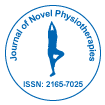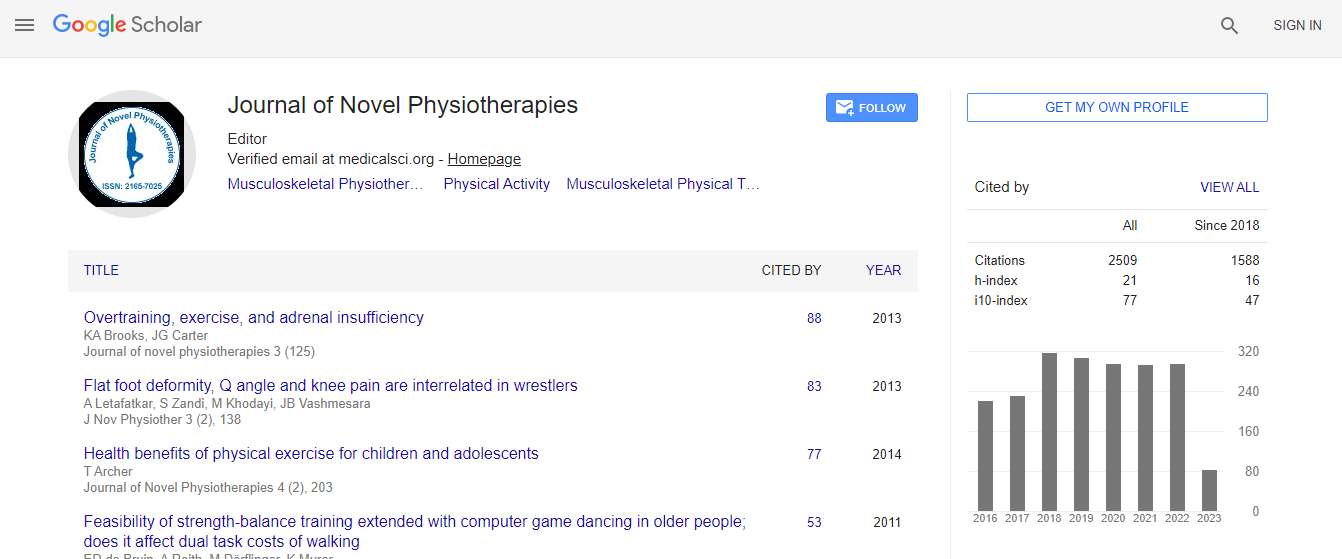Research Article
Effect of Dynamic Knee Motion on Paralyzed Lower Limb Muscle Activityduring Orthotic Gait: A Test for the Effectiveness of the Motor-Assisted Knee Motion Device
| Hiromi Akahira1,2, Yuko Yamaguchi1, Kimitaka Nakazawa3, Yuji Ohta1and Noritaka Kawashima4* | |
| 1Faculty human life and environmental science, Ochanomizu University, Japan | |
| 2Products Research and Development, Research Institute, TOTO Ltd, Japan | |
| 3Graduate School of Arts and Sciences, University of Tokyo, Japan | |
| 4Department of Rehabilitation for the Movement functions, Research Institute, National Rehabilitation Center for Persons with Disabilities, Japan | |
| Corresponding Author : | Noritaka Kawashima Department of Rehabilitation for the Movement Functions Research Institute National Rehabilitation Center for Persons with Disabilities 4-1, Namiki, Tokorozawa, Saitama, Japan Tel: +81-4-2925-3100 Fax: +81-4-2995-3132 E-mail: kawashima-noritaka@rehab.go.jp |
| Received August 29, 2012; Accepted September 22, 2012; Published September 25, 2012 | |
| Citation: Akahira H, Yamaguchi Y, Nakazawa K, Ohta Y, Kawashima N (2012) Effect of Dynamic Knee Motion on Paralyzed Lower Limb Muscle Activity during Orthotic Gait: A Test for the Effectiveness of the Motor-Assisted Knee Motion Device. J Nov Physiother S1:004. doi: 10.4172/2165-7025.S1-004 | |
| Copyright: © 2012 Akahira H, et al. This is an open-access article distributed under the terms of the Creative Commons Attribution License, which permits unrestricted use, distribution, and reproduction in any medium, provided the original author and source are credited. | |
Abstract
Orthotic gait in paraplegic persons is a “stiff-leg” gait, which is a gait with the knee locked in full extension position. We developed a motor-assisted knee motion device with the use of a pair of linear electric actuator attached to the knee joint of a conventional reciprocal gait orthosis (Advanced Reciprocating Gait Orthosis: ARGO). The purpose of this study was to examine the effect of dynamic knee motion on lower limb muscle electromyographic (EMG) activity during orthotic gait. Six motor complete spinal cord injured persons participated, and the subjects were asked to walk on a treadmill with two types of orthoses; Knee-ARGO and Normal-ARGO. The results demonstrated that magnitude of EMG activity in the gastrocnemius and the rectus femoris muscles was significantly increased by an accomplished dynamic knee motion. These changes might be attributed to the occurrence of an additional afferent neural input with the knee motion. The present results suggest that the assisted knee motion by generating powered device have a potential to activate the neuromuscular function in the paralyzed lower limb.

 Spanish
Spanish  Chinese
Chinese  Russian
Russian  German
German  French
French  Japanese
Japanese  Portuguese
Portuguese  Hindi
Hindi 
